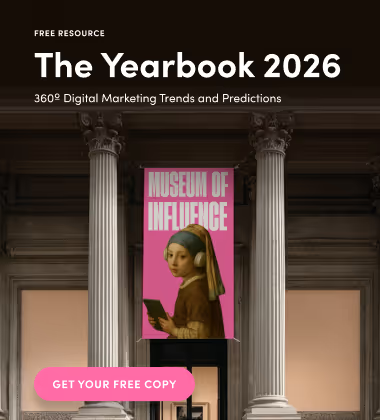When looking at a screen all day starts to become a bore, then what?
The pandemic had the world embarking on a constant search for entertainment and other ways to pass time. However, scrolling through photos and videos on the usual social media platforms just didn’t cut it anymore. People wanted to actually connect and be part of a conversation—and social audio apps seemed to do the trick.
But what exactly made these apps such a hit, and how do they actually work?
The Influence Agency is here to help you take a closer look at the state of three of the most recognized audio-based social media platforms: Clubhouse, Twitter Spaces, and Spotify Greenroom.
What Social Audio Apps Are and Why They Stood Out
Unlike Podcasts, which are pre-recorded, everything that happens on social audio apps is live.
With their real-time interactive features, users can join different “rooms” and discuss anything under the sun—from influencers talking about inclusivity and digital marketing trends to stand-up comedy and celebrity Q&A sessions. Participants have the opportunity to raise their hands and share some insight or simply be a quiet listener.
The biggest perk is that people can connect with each other via audio, without the need for text or video. An actual conversation is sparked, rather than just a double tap or an emoji to show some form of social participation—users feel like their voices are heard.
There’s almost always a valuable takeaway when you join social audio apps. And even if you don’t *virtually* raise your hand to say something, you can count on it that there’s something to learn or entertain you every time.
Unlike on Zoom and Google Meets, where you actually have to comb your hair a bit before you jump in to join a discussion, audio-based social media pretty much gives the best of both worlds. You get to share and gain insight without having to worry about making constant eye contact or whether you look presentable enough. After all, Zoom fatigue is no myth.
Clubhouse
This social audio app was one of the first of its kind to take the world by storm and gain instant popularity. According to its developers, Paul Davidson (Silicon Valley veteran) and Rohan Seth (former Google employee), the goal of the new social app was “to build a social experience that felt more human—where instead of posting, you could gather with other people and talk.”
You'll even find big names like Oprah Winfrey, Drake, Kevin Hart, Jared Leto, and Ashton Kutcher on this social audio app. Because it’s possible to actually earn money from in-app donations, this app has become a brand new platform for anyone in the creator industry.
How It Works
Clubhouse is an audio-based social media app that features “rooms” covering any topic you can possibly think of—and anyone can join in (Initially, it used to be by invitation only.) These rooms have moderators (usually influencers) who can control who gets to speak and when. All you have to do is tap the “Raise Hand” button if you’d like to be brought up to the stage.
Speaker Limit: No limit
Listener limit: 8,000
Clubhouse’s Rise and Fall
Launched only in March 2020, Clubhouse soon had a weekly user base of over 10 million people within its first year. By February 2021, the audio-based social media app hit a whopping 10 million downloads in just one month. However, its popularity seemed to decline two months later (April 2021) when it only reached 900,000 downloads.
In the UK, Clubhouse’s monthly active user count went from 550,000 in February 2021 to only 160,000 in September 2021.

Twitter Spaces
Heavily inspired by the success of Clubhouse, Twitter decided to bring its own version of a social audio app to the table. In November 2020, they launched Twitter Spaces.
How It Works
Initially, only Twitter users with at least 600 followers could launch their own “Space.” However, this has recently been adjusted to allow anyone to host an audio room. All they have to do is share a link to invite people to join. If participants would like to speak within the Space, there’s a “Request” icon that they can tap.
Because Clubhouse used to be by invitation only, Twitter Spaces enjoyed its time in the spotlight as a more inclusive social audio app that anyone could join in on. Plus, it also features Hi-fidelity audio built on Periscope’s infrastructure that users absolutely love.
Speaker Limit: 10 speakers
Listener limit: No limit
Spotify Greenroom
Celebrities, music influencers, and athlete influencers have a new way of connecting with their fans—and it’s all thanks to Spotify’s Greenroom. On this social audio app, you’ll also find rooms that discuss celebrity news, NBA updates, and comedic content. The best part is that anyone can launch their own Greenroom to talk about any topic!
On another note, the popularity of this audio-based social media app is yet to rise. It has only been downloaded about 100,000 times among Android users and approximately 140,000 times on iOS.
How It Works
Just like Clubhouse and Twitter Spaces, Spotify Greenroom is moderated by a host who has control over who speaks on the “stage.” Listeners can also raise their hands if they’d like to ask questions or share anything.
Unlike the hearts on Instagram, Greenroom features Gems as its own unique way of “liking” something a speaker says. Simply double-tap the speaker’s profile photo to send a Gem.
Maximum capacity per Greenroom: 1,000 individuals

Rooting for Social Audio Apps
As the world slowly returns to normal after almost two years in the COVID-19 era, some audio-based social media apps have seen somewhat of a decline in their user base. This, perhaps, has a lot to do with the fact that people can now hold in-person conversations and have less time to tune in to other people’s discussions on these platforms.
But what we love about social audio apps is that they’re truly living up to being a “social” platform. They’re conversation-focused and bring people of similar interests together, and that’s what socializing is all about. We can only cross our fingers and hope that audio-based social media stays relevant in the future—because it truly deserves to.
Social audio apps are great platforms for influencers and brands who want to expand their reach. If amplified awareness is your goal, The Influence Agency will help you get there. Learn more about our digital and social media marketing services and how it’s one of the biggest game-changers you need to leverage right now.
Contact us to learn more!



